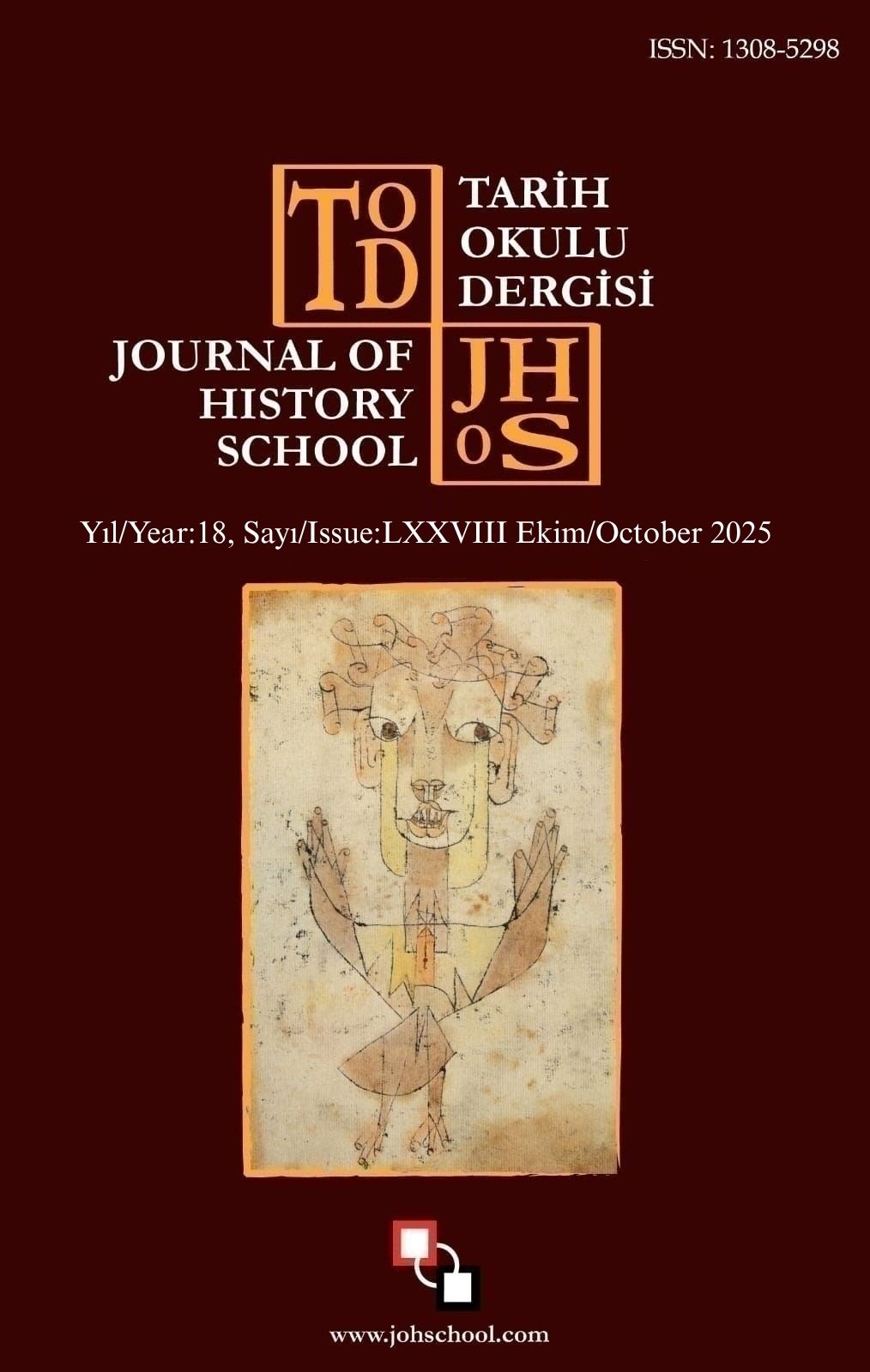Author :
Abstract
Edebiyat çevrelerinde ve tarihlerinde Cumhuriyet dönemi Türk şiirinde Hisar dergisi etrafında toplanan şairler içerisinde anılan ve güftekârlığıyla da sanat dünyasında yer edinmiş olan Halil Soyuer (1921-2004)’in bütün şiirleri gelenek bağlamında incelendiğinde şairin modern Türk şiirinde halk ve divan şiiri geleneğini sürdüren ve bu gelenekten yararlanan tavrı dikkat çeker. Soyuer nesirlerinde de gelenekle bağını ortaya koyan düşüncelerini ifade eder. İlk şiir kitabı Liman, 1950 yılında yayımlanmış olan şairin eser verdiği dönem, memleket edebiyatı çizgisinin Garipçilerle yönünü değiştirdiği zaman dilimine rastlar. Geleneğin, direnişin ve geleneğe direnişin çatışmasının hâkim olduğu bu süreçte Soyuer, Garipçilerin geleneği kıran poetikalarına karşı çıkar. Onun şiirleri geleneğin direnişini sürdüren örneklerdir. Özellikle halk şiir tarzını şekil, anlam ve üslup yönüyle modern Türk şiirinin içinde yaşatan şair, divan şiirini de aruz vezni, mazmunlar, aşk anlayışı ve üslup bakımından devam ettirir. Soyuer şiirlerinde en çok 6+5 duraklı 11’li hece veznini ve koşma nazım biçimini tercih eder. Rediflerin anlamı yönettiği bu şiirlerde Yunus Emre, Karacaoğlan, Emrah, Seyrânî, Sümmânî gibi halk şairlerinin üslup, kelime, duygu ve düşünce dünyasıyla benzerlik ve ortaklıklar bulunur. İşlenilen aşk, gurbet, sevgi gibi temalar; konuşma dilinden seçilen kelime ve deyimler; esprili üslup; güzelleme, şathiye ve muamma gibi türler bu şiirleri halk şiir geleneğine bağlar. İlhama dayalı ve lirizmi önceleyen şiir ve şair algısı da yine gelenekle örtüşür. Leyla ile Mecnun, Aslı ile Kerem gibi halk hikâyeleriyle kurduğu metinlerarası ilişkiler de şairin beslendiği kaynağı ve benimsediği tarzı gösterir. O karanlık, kasvetli, anlaşılmaz şiirin değil kolaylıkla söylenmiş gibi görünen ama içerisinde yüzyılların imbiğinden süzülüp gelen insan ve hayat algısını barındıran, bir yandan da hareketli, ritmik yapısı ve esprili dil oyunlarıyla okuyanı gülümseten ve şaşırtan şiiriyle geleneğin bir halkası olur.
Keywords
Abstract
Halil Soyuer (1921-2004) is mentioned in literary communities and histories among the poets gathered around Hisar magazine in the Turkish poetry of the Republican period, and he has also gained a place in the art world as a songwriter. When all his poems are analyzed in the context of tradition, the poet's approach that continues the tradition of folk and divan poetry in modern Turkish poetry and utilizes this tradition draws attention. In his prose, Soyuer also expresses his thoughts that reveal his connection with tradition. The poet's first book of poetry, Liman, was published in 1950, and the period in which he wrote coincides with the period when the line of national literature changed its direction with the Garips. In this process, which was dominated by the conflict between tradition, resistance and resistance to tradition, Soyuer opposes the poetics of the Garips, who are against tradition. His poems are examples that continue the resistance of tradition. In particular, the poet keeps the folk poetry style alive in modern Turkish poetry in terms of form, meaning and style, and continues the divan poetry in terms of aruz, metaphors, style and conception of love. In his poems, Soyuer mostly prefers the poem form of the koşma. In these poems, in which rhymes direct the meaning, there are similarities and commonalities with the style, vocabulary, emotions and thought world of folk poets such as Yunus Emre, Karacaoğlan, Emrah, Seyranî, Sümmânî. Themes such as love, farawayness, and affection; words and phrases chosen from colloquial language; humorous style; and genres such as güzelleme, şathiye, and muamma link these poems to the folk poetry tradition. The perception of poetry and poet based on inspiration and prioritizing lyricism is also in line with the tradition. The intertextual relations he establishes with folk tales such as Leyla and Mecnun, Aslı and Kerem also show the source of the poet's nourishment and the style he adopts. He becomes a link in the tradition not with his dark, gloomy and incomprehensible poetry, but with his poetry that seems to be easily spoken but contains the perception of human and life filtered through the centuries, while making the reader smile and be surprised with its lively, rhythmic structure and humorous language games.





